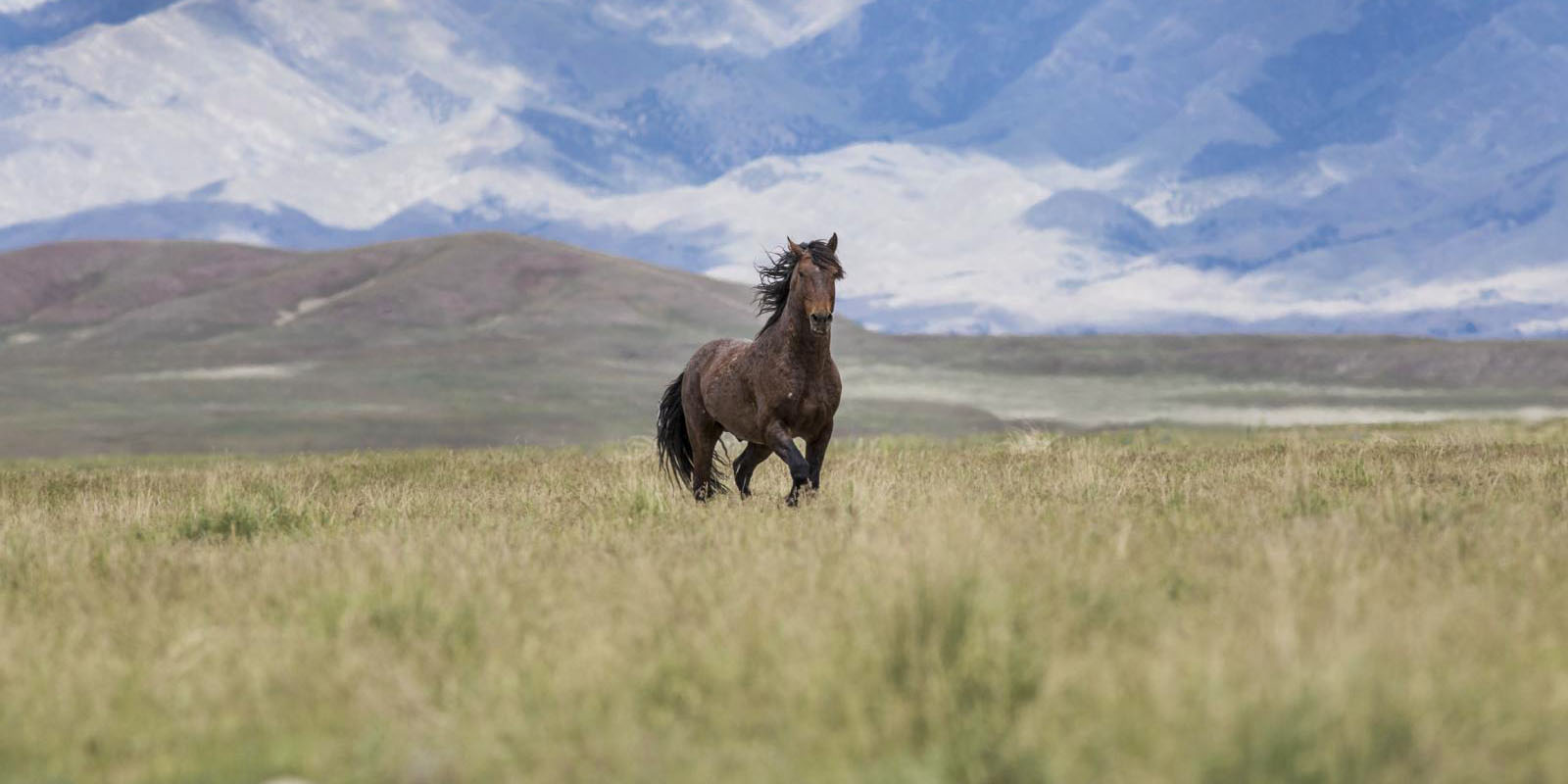The BLM and the University of Wyoming are conducting a Radio Collar Study on wild mares in the Adobe Town Herd Management Area. I have done several blog posts about this study, calling for people to send in comments and calling for more clarification on how this study is going to be conducted. Some of my concerns are the the health and well being of the mares that will be captured by bait trapping, trailered to Rock Springs, put into squeeze chutes and have these collars put on. These collars will remain for 2 years. Then the mares will be transported back supposedly to where they were captured and released. This alone will be very traumatic for the mares and their families who will lose a family member.
But what happens when the mare gets her foot caught in the collar, or it grows into her neck because it is being put on when she is at her thinnest, and she will put on weight in the summer especially if she is pregnant? How will they be able to release the collar if she is in trouble?
These were not popular questions at the Q and A that USGS conducted yesterday at the Rock Springs corrals. I was told that they “left room” in the collars for the mares to gain weight – wouldn’t that allow her to get it caught on something more easily? And yes there were studies of mares being injured and dying in the field due to radio collars but supposedly this design was much improved. They do have a tag they can put into the mane instead but these will fall off too soon. I did ask about using direct observation as a way of gathering data but that was deemed impossible, even though it is much less intrusive. The researchers would rather track the mares on their computers rather than on the ground, in the field. I also asked weren’t they concerned about the mares being released all alone, not with their families? There was no answer to that.
Before I even went to Rock Springs I had been very concerned about the lack of observation of the whole process that the BLM was allowing. Public observation helps to prevent abuse of the horses, and I am a firm believer in this. A week ago American Wild Horse Preservation Campaign asked attorney Nick Lawton of Meyer, Glizenstein& Eubanks to write a letter asking for the opportunity to observe the bait trapping and the collaring as well as the release of the mares, as well as giving sufficient notice of at least 2 days so I could get out there. The BLM did not change its stance on the bait trapping and the collaring or the notice but did say that “the mares will be held at the facility for 24 hours after they are radio collared, and the public will be able to observe the mares from the overlook during this time period.”
This did NOT happen. The mares after they were collared were being kept in a pen that was completely not visible from the overlook and when I asked it if could see the mares I was told no, that they have to be be kept quiet. Somehow all the torment that these mares went through was totally acceptable but having members of the public view them, even at a distance, was too hard on them.
I could see the heads of the mares that did not have collars on, and occasionally their bodies, using my long lens. Apparently they captured 9 mares who they brought to the facility, but 5 were too young. Even I could see one of the mares looked like a yearling or at the most a two year old filly – how on earth could the people trapping the horses not be able to tell the difference between very young and mature mares? And why put these poor young mares though the stress of taking them away from their families, hauling them to the facility then hauling them back, for nothing? If they had allowed me to observe the bait trapping I could have told them these mares were too young because I have spent 13 years observing these wild horses in Adobe Town.
We did get to see the collars used on the mares, and also a video of a collar dropping off of a burro in another study. We were told if the mare gotten into trouble and stopped moving, they would release the collar, they could do this online. But would the collar jam during bad or very cold weather? They also showed us equipment for tracking the collars in the field. They told me there was no way to do this study using more high tech state of the art equipment like a tag under the skin and laughed at me saying how could the battery fit there? These collars are old technology, completely outdated and I am sure there are better less intrusive ways to do this. But they want to use the collars and they do not care how much stress the whole process will be on the mares.
I am meeting the BLM at the Rock Springs corrals on Sunday morning to follow them out to release the 4 mares with collars and I assume the 5 without. Hopefully I will be close enough to actually see them and photograph them. And please let them not get into trouble, please keep them safe. They do not deserve what is being done to them.


